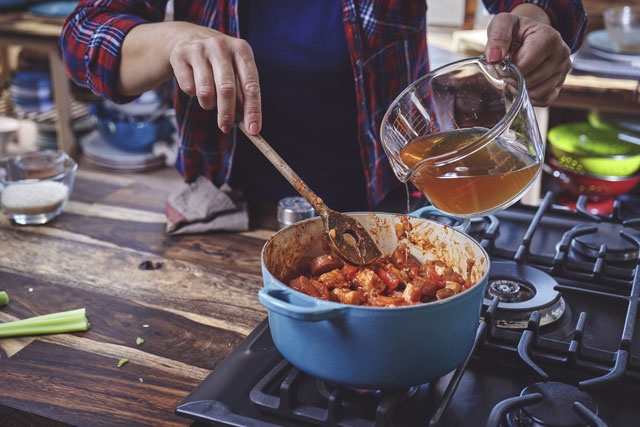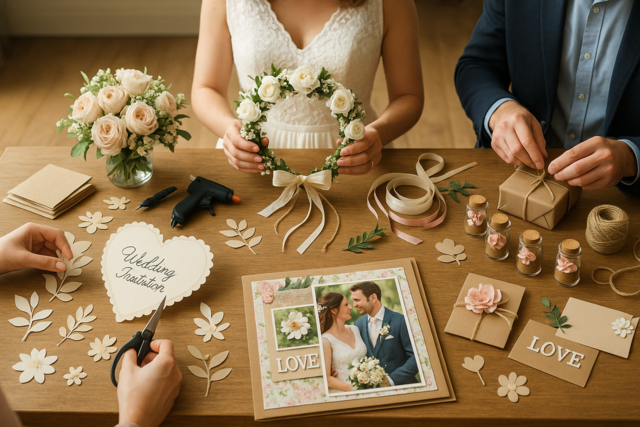Logistics is the art of getting everything where it needs to be by the time it needs to be there. The term is most often used in business and especially in the shipping industry, but it definitely applies to party planning: for example, you need to make sure you have enough serving utensils for everyone and that they are all out and ready by the time the party starts.
Setting the table
You can use paper plates, napkins, and Styrofoam cups. However, one of the appealing elements of the tea party is the opportunity to set the table with real China, actual teacups, linens made of fabric, and reusable teapots.
You will also need a pot to brew the tea in. Teapots are different from coffee pots in that they tend to be shorter and fatter to allow the water to circulate better.
Key notes: There is actually a difference between a teapot and a teakettle. A teapot can be made of ceramic, cast iron, or other materials. You pour hot water and tea into a teapot. You may decide to put a tea cozy over a teapot to help it stay warm. A teakettle on the other hand, is a device into which you pour only water. In general, you can't open the kettle to clean it, so you never want to put anything but water in it. You put the kettle on the stove to boil water. The kettle is designed to have a closed top and pouring spout--this helps the water reach boiling temperatures faster.
Some restaurants and hotels have urns for hot water. These can either be electric (you fill it with water and plug the urn in to the wall. The urn then heats all the water) or they can be like big Thermoses, into which you pour boiling water and the insulated urn keeps the water hot for a few hours.
If you wish to offer your guests a selection of tea bags and allow them to brew their own tea in their individual cups, then you should invest in a large insulated carafe for hot water or an urn. Asking your guests to pour their own hot water straight from the kettle is very "rustic," but it can work in a pinch.
A better presentation involves the host selecting two different types of tea and brewing them in a teapot. Guests then serve the tea (or the hostess pours) directly from the pot.
Type of Service
Goodies can be passed along the table, set out on a tiered stand, or served buffet style. Passing plates works well with a small table and less than 10 guests. It is not really practical for a gathering with several tables of people, but if you find several tiered tea plates (also called a curate stand), you could place one on each table and allow guests to serve themselves. The easiest service of all is buffet style; in which one table is laden with the goodies and guests file through the line. Keep in mind that buffets tend to develop lines. If this is the service method you choose, design your buffet line so that guests can filter through on either side. If you have more than 50 guests, offer multiple buffet stations to keep the line manageable.
In a buffet-style tea service, you could put urns of hot water on a separate table with a selection of tea bags. You may also decide to offer urns of coffee and pitchers of lemonade and iced tea. Or, you could put individual teapots with your brewed teas on each table.
At a smaller party, you have the opportunity to tell your guests about the unique features of the tea you have chosen (if they are interested--a party of nine year-olds will probably not be very inclined to listen to a history of Rooibos tea).
Working ahead
Perhaps one of the most appealing aspects of the tea party is that you can do so much of the prep work ahead of time. You can bake or buy cookies and scones weeks ahead and freeze them if necessary (but of course, oven-fresh items will always have a special place in your guests hearts). Sandwiches can be assembled and arranged on platters hours before the event. Desserts are best made early in the day or even the night before.
You can even heat the water before your guests arrive, and you can fix iced tea and lemonade earlier in the day. However, it is not a good idea to brew hot tea more than a few minutes before the guests will drink it. Tea cools down, and if you leave tea bags in hot water too long, they become too bitter and strong, but more on that in following sections.
Preparing the venue
Whether you have the tea party at your own home or another venue, you may have to do some prep work.
At home, the most important thing you can do is tidy up. Seriously, no one wants to eat or drink in a house that is visibly dirty. Disorder is one thing, but dirty dishes in the sink, restrooms with dirty towels and empty toilet paper cores on the floor, living spaces littered with trash and dirty clothes belong on an episode of hoarders, not at your party. If you haven't deep-cleaned for a while, a party is a great motivator.
Here are some tips to help get your house party ready:
-
Hire your kids, if you have them. Some parents offer money in exchange for de-cluttering, sweeping floors, running the vacuum and tidying up. Others routinely compel children to clean up as part of daily life.
-
Rent-a-kid. If you don't have children, or if yours are grown and gone, hire the friends of kids to help get your house ready.
-
Take a day off of work. Spend an entire day preparing the house for your party.
-
Hire a professional. If you have a bigger budget, consider having a professional cleaning service pay a visit to get your house party-ready.
Whether or not you have children at home, the house-cleaning prep work should be done at least a full day before your party, and definitely before you begin the food prep work. In this way, your kitchen will be clean and ready to assemble food for other humans.
If you are hosting the party in an outdoor space at your own home, you will also need to take some time to get the outside areas party ready. Again, you can do the work yourself several days ahead of time, or you can hire a helper. Your garden doesn't need to be spotless, but you want people to feel comfortable sitting in lawn chairs without having to dust off pollen. They should also be able to walk easily through grass without worrying about ticks and other varmints. All table surfaces should be cleaned the same day. Large yard debris, weeds and fallen limbs should be cleaned up in the days before, the grass mowed, and weeds removed.
In another venue
One of the great benefits to holding your tea party at another place, like a hotel, tearoom, community center or a friend's house, is that the pre-event cleaning will not be your job. However, you will still need to arrive at least a half-hour early to make sure everything is set up the way you want. At a friend's house, you can only make limited demands as to furniture setup--but if you hold your event at a commercial venue, you can specify exactly how you want tables arranged. Although you will probably meet with the venue's managers ahead of time to discuss your wishes, ideas get easily lost in translation. Make sure you arrive early to double-check setup.
The guests
The single most important job of a host or hostess at any party is to make sure that all of their guests are having a good time and are as comfortable as possible. To that end, when you are planning your party, think about your guests first and make sure you have appropriate food and entertainment for the crowd that will be there.
You know your friends better than anyone else and are better able than anyone to know if they have special food needs (for example, are any of your friends vegetarians, gluten-intolerant, vegan, or on any other special diet). Are they non-drinkers? Do they like to dance? Do they enjoy card games or prefer to talk? Are they young, old, or mixed? When you plan your party activities, keep all these factors in mind.
For children, do not plan to have them sitting for more than a 15 minutes at a time. Allow plenty of time for games and other activities. For young adults, allow plenty of time for socializing. Older adults also enjoy socializing, but tend to have more specific dietary requirements, so consider keeping foods separate: offer "segregated" foods--in other words, you might let guests assemble their own sandwiches so that they can stay fat-free, high-protein, gluten-free, vegan, vegetarian, kosher, or whatever else they need to do.
Don't plan on keeping anyone, young or old, tied to a chair for too long. People enjoy circulating, walking, talking, playing games and generally being social. This is, after all, the purpose of a party.






















